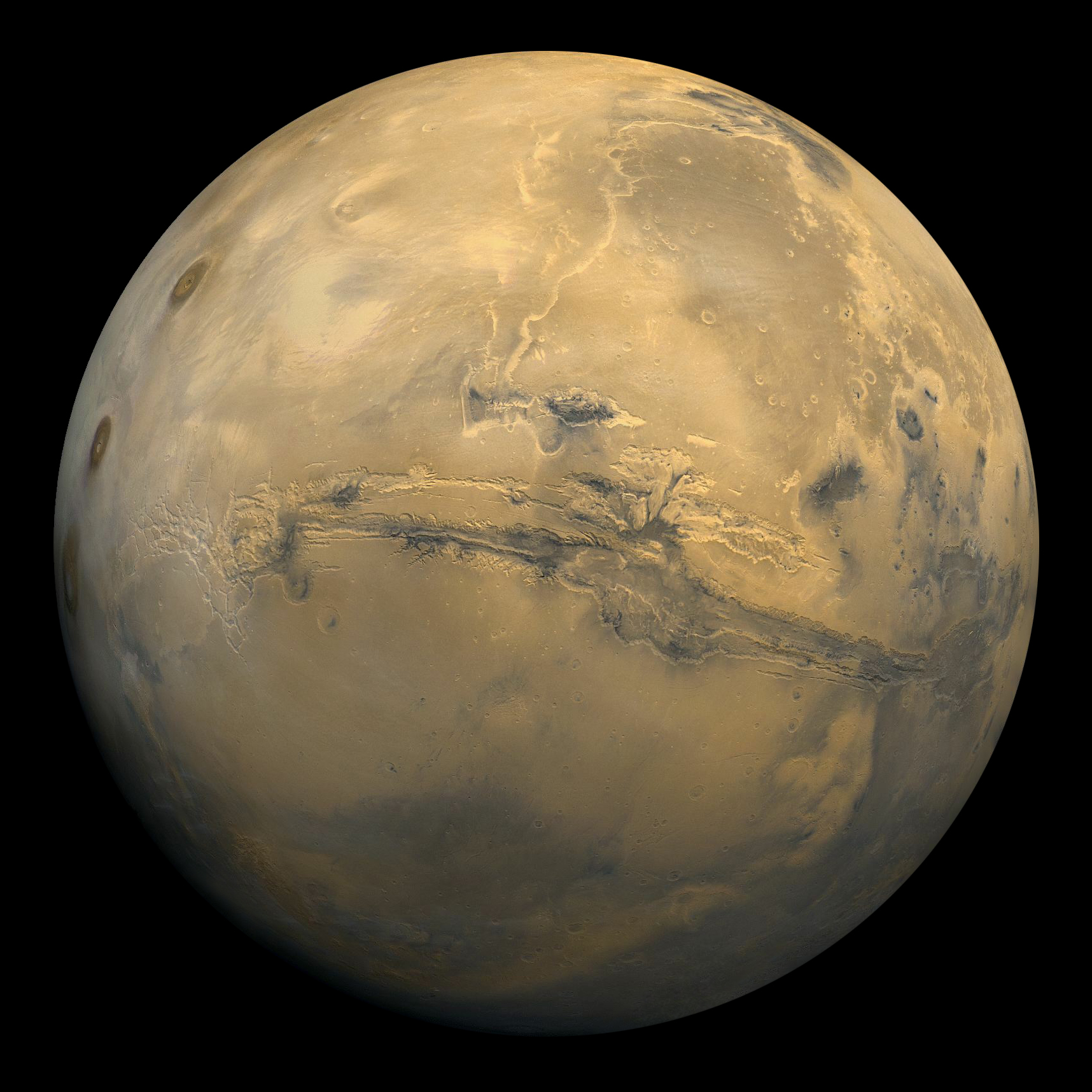 Jupiter is so far my favorite painting I have done in my solar system series. I used hot pressed paper this time, normally I paint on cold pressed paper, but I saw this today when I was at the art store and thought it might work well for the planets. The difference is with hot pressed paper the finish is smooth and very soft to the touch, cold pressed has more texture and absorbs the paint more. Watercolor on paper. 3/23/2015
Jupiter is so far my favorite painting I have done in my solar system series. I used hot pressed paper this time, normally I paint on cold pressed paper, but I saw this today when I was at the art store and thought it might work well for the planets. The difference is with hot pressed paper the finish is smooth and very soft to the touch, cold pressed has more texture and absorbs the paint more. Watercolor on paper. 3/23/2015
Tag Archives: space
Daily Creativity: Mars
 Mars! Isn’t it great? The planet I mean. I love space, and have been wanting to explore painting some of the planets and heavenly bodies. I thought I’d start with water colors, and work my way up to oil paints. Each medium gives me something different to explore, with oils being rich and deep while watercolors have a lightness that can work for things that you want to have a glowing feel to them. Plus I love how I can layer colors with watercolors. While Mars may not be right for watercolors, I wanted to do Mars first. Partly because Opportunity is almost done with her marathon and finding awesome data for us, and partly because it’s one of my favorite planets. Of course choosing a favorite planet is like choosing a favorite child, it’s not really something I can do.
Mars! Isn’t it great? The planet I mean. I love space, and have been wanting to explore painting some of the planets and heavenly bodies. I thought I’d start with water colors, and work my way up to oil paints. Each medium gives me something different to explore, with oils being rich and deep while watercolors have a lightness that can work for things that you want to have a glowing feel to them. Plus I love how I can layer colors with watercolors. While Mars may not be right for watercolors, I wanted to do Mars first. Partly because Opportunity is almost done with her marathon and finding awesome data for us, and partly because it’s one of my favorite planets. Of course choosing a favorite planet is like choosing a favorite child, it’s not really something I can do.
Yes, I am a mega nerd when it comes to space. I love it. I have loved space since I was a kid. I remember watching Space Camp, the movie, and thinking that would be awesome! Of course I never think about my fear of enclosed spaces, and space travel requires that.
Watercolors on paper. 3/10/2015 (Yes the date on the actual painting is slightly wrong, I looked at the date on my phone not realizing it passed midnight, as I count dates for projects is it’s still today if I haven’t gone to bed yet.)
Answers from the Vault: I answer YOUR questions….on Mars!

A beautiful view of Mars, from Wikipedia and NASA
“What would the wingspan of a glider on Mars be?”
Flying on Mars is tricky. I know, I’ve done it. Well, that is to say, I’ve done it in a simulator. Because a flight simulator is nothing but a giant physics engine with a bunch of mathematical constants plugged in, its possible to have the simulator spit out the atmospheric conditions of almost anywhere, and then re-create it. X-Plane, by Laminar Research is perhaps the best such flight sim available on the commercial market, and using some NASA atmospheric and geographical data, allows you to recreate flying on Mars in a pretty believable way.
Wings (airfoils) only work when the air current flows over them at a certain speed. That speed is dependent on the airfoil shape, and is subject to a lot of heavy math well above my humble head to try and figure out. If the speed of the flow over the airfoil gets too low, it stops generating lift. This is called a stall, and is generally bad news for whatever the airfoil is attached to, that is: the rest of the plane with you in it. So a certain speed needs to be maintained in order to stay in the air. With a powered airplane, the engine provides that forward speed. In a Helicopter, the rotation of the blades provides the lift, and in a glider it is gravity pulling the plane downwards that provides the lift. Let’s throw a theoretical number out there. Imagine that Glider X needed to maintain a minimum speed of 20 miles per hour in order to stay airborne.
Nutty Bites 12 Part II: December
- Veronica Mars
- The Muppet Movie
- Todd and the book of Pure Evil
- Tomboy (read my review on the blog)
- AbFab is back!
- Sherlock is back with a deer stalker hat
- Sherlock Holmes Movie
Art Happenings?
- Watercolors!
- Rory as Father Christmas
- Tek and Rory as Calvin and Hobbes
- and the Caelann painting.
- I might attempt something pink next.
FEEDBACK:
- Email from Richard from Illinois
- Google Plus Coments
- Comments on the blog
- Writing challenges from AuroraLee:
- http://www.caramichaels.com/defiantlyliterate/wip500/
- http://notenoughwords.wordpress.com/about/project-2012/
RANT!
- What is with eating during podcasting? NO!
Contact/Feedback
(347) NUTTY42 or (347) 688-8942
http://nimlas.org/blogCreated by NIMLAS SUDIOS
This work is licensed under a Creative Commons Attribution-NonCommercial-NoDerivs 3.0 Unported License.
Podcast: Play in new window | Download (51.8MB) | Embed
Subscribe: RSS

